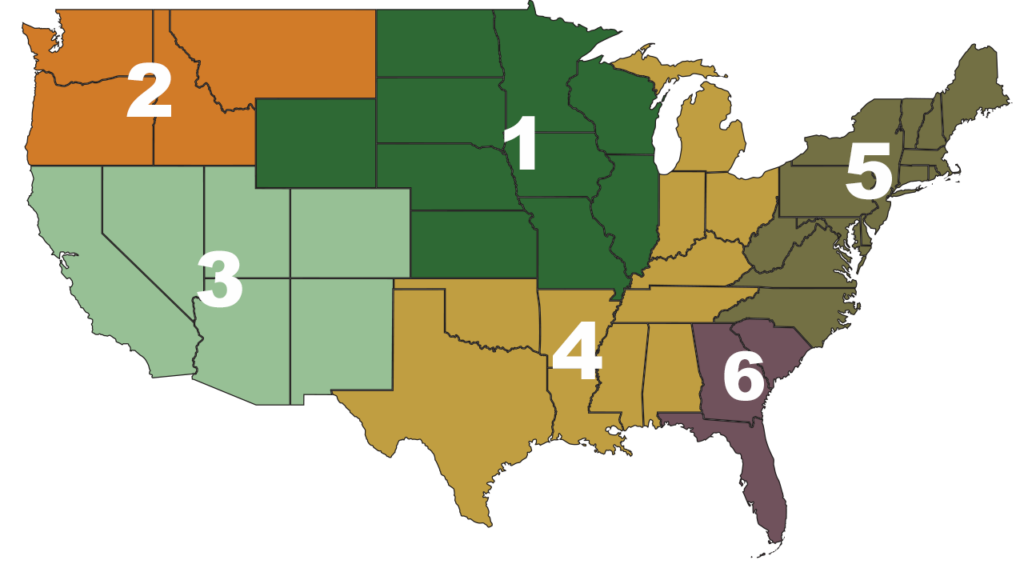
Shipping zones play a crucial role in the world of logistics and e-commerce. Understanding what shipping zones are and how they work is essential for businesses and individuals involved in shipping and receiving packages. From determining shipping rates to estimating delivery times, shipping zones provide valuable insights that help streamline operations and enhance customer satisfaction.
In this comprehensive guide, we will explore everything you need to know about shipping zones, including their definition, significance, and the impact they have on the shipping process. Whether you are a business owner, an online shopper, or simply curious about the logistics behind package delivery, this article will equip you with the knowledge to navigate the complexities of shipping zones with ease.
What are shipping zones?

Shipping zones are geographical areas or regions that carriers use to categorize and determine the shipping rates and transit times for packages. These zones are typically defined by distance or proximity to a specific location, such as a fulfillment center or shipping hub.
The exact definition and number of them can vary depending on the carrier or shipping service being used. For example, a carrier may divide a country into multiple shipping zones, or they may have different zones for domestic and international shipments.
Shipping rates and transit times often increase as the distance or zone number increases. This is because shipping carriers consider factors such as the transportation costs, fuel expenses, and the time it takes to deliver a package to a more distant zone.
How are shipping zones calculated?

Zip Code-Based Zones
One common method is to establish shipping zones based on zip codes or postal codes. Carriers assign each zip code to a specific zone, grouping together areas that are geographically close to one another. This method simplifies the calculation process as it relies on established postal code boundaries.
Distance-Based Zones
Some carriers calculate shipping zones based on the distance between the origin and destination addresses. They may divide the coverage area into concentric circles or predetermined distance ranges from their distribution centers or hubs. Each circle or range represents a different shipping zone, with the inner zones being closer and typically less expensive to ship to.
Regional or State-Based Zones
Carriers might define shipping zones based on regions or states, considering factors such as transportation infrastructure and logistical efficiency. This approach can especially useful when the carrier’s network optimize for specific regions or when certain areas have unique shipping requirements.
Destination-Based Zones
In some cases, they are primarily determined by the destination rather than the origin. This method allows carriers to prioritize certain areas or allocate resources based on the demand and volume of shipments to specific locations. The zones may be defined by countries, provinces, or major cities.
Carrier-Specific Zone Definitions
Each delivery carrier has its own unique approach to defining it. They may consider a combination of factors mentioned above or use proprietary algorithms and data to determine their specific zone boundaries. Carriers often provide detailed information on their websites or in documentation about how they calculate and assign it.
It’s important to note that it can change over time. Carriers may periodically update their zone definitions to adapt to changes in their network, operational efficiency, or market demands.
How do shipping zones affect shipping costs?

are geographical regions that determine the distance between the origin and destination of a shipment. These areas are typically defined by shipping carriers based on factors such as proximity, transportation infrastructure, and logistics considerations.
Shipping zones play a significant role in determining delivery costs for several reasons:
Distance
Shipping costs often increase with distance. Delivery carriers may establish different pricing tiers for different areas based on the distance traveled. Generally, the farther the shipping distance, the higher the shipping cost.
Transportation Modes
Different shipping zones may require different transportation methods or routes. For example, air transportation may be more expensive for long distances or remote areas, while ground transportation may be more cost-effective for shorter distances or nearby regions.
Delivery Time
It can influence delivery times. Carriers may allocate different resources and service levels to various zones. Faster delivery options, such as express or overnight delivery, might be more readily available and costly for certain zones.
Service Level
Shipping carriers may offer different service levels or delivery options based on the shipping zone. For instance, a carrier might provide next-day delivery for nearby zones but extend the delivery time for more distant regions. Each service level may have a corresponding cost associated with it.
Ancillary Costs
Shipping carriers may consider additional factors when calculating shipping costs, such as fuel surcharges, tolls, customs fees, or other regional charges. These costs can vary depending on the shipping zone.
It’s important to note that shipping carriers have their own specific zone definitions and pricing structures. These can differ between carriers, so it’s advisable to consult the carrier’s documentation, website, or customer service to obtain accurate and up-to-date information regarding shipping zones and associated costs.
How do shipping zones affect speed of delivery?

can have an impact on the speed of delivery, although the specifics can vary depending on the shipping carrier and the distance between the origin and destination. Here’s a general overview of how shipping zones can affect the speed of delivery:
Proximity
Shipping zones are typically determined based on the distance between the origin and destination. The closer the destination is to the origin, the lower the shipping zone number. As a result, shipments within the same or nearby zones generally have shorter transit times compared to those traveling to distant zones.
Transit Time Estimates
Shipping carriers usually provide estimated transit times for different shipping zones. These estimates are based on historical data and take into account factors such as distance, transportation infrastructure, and handling processes. Shipments traveling to closer zones are often expected to arrive faster than those going to zones farther away.
Transportation Methods
Carriers may employ various transportation methods depending on the shipping zones involved. For nearby zones, ground transportation options like trucks may be used, which can offer faster delivery times. On the other hand, shipments to distant zones may require air or sea transportation, which can extend the overall transit time.
Service Levels
Shipping carriers often offer different service levels or shipping options with varying delivery speeds. Expedited services, for example, are typically available for shorter shipping zones and can provide faster delivery within a specified timeframe. Slower service levels, such as economy or standard shipping, may be more suitable for longer distances.
Processing and Handling
The time required for processing and handling shipments can also be influenced by shipping zones. If a package is traveling to a nearby zone, it may spend less time in transit and more time being processed or sorted at distribution centers, leading to quicker delivery. Conversely, shipments to distant zones may have longer transit times, with less time spent in handling and processing facilities.
It’s important to note that shipping zones and their impact on delivery speed can vary between carriers, regions, and methods.